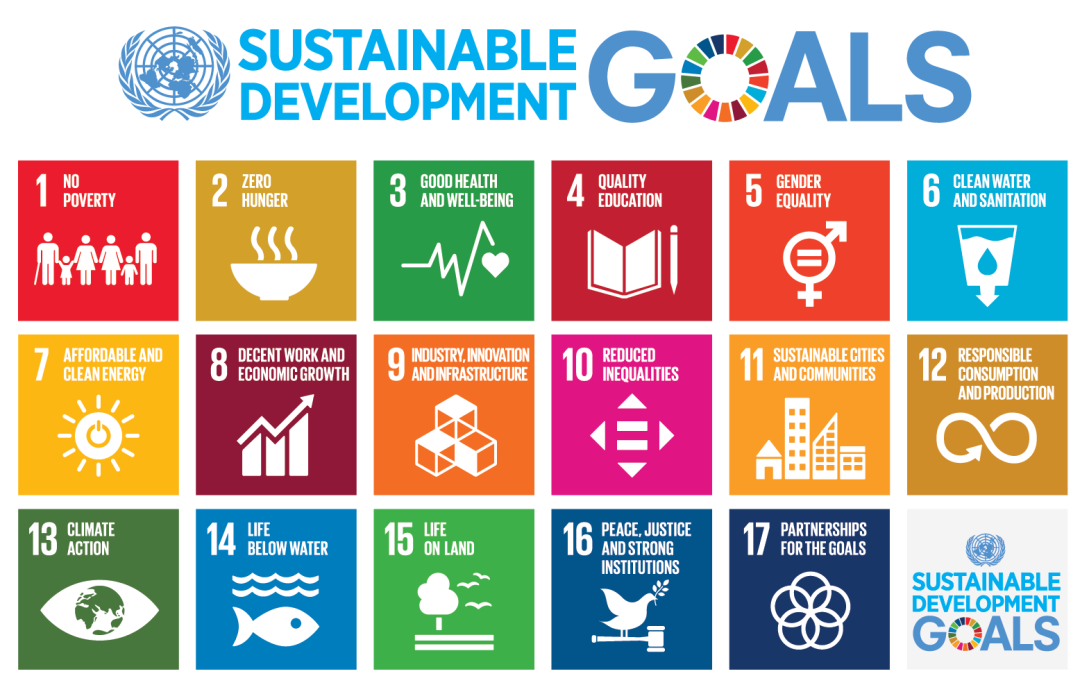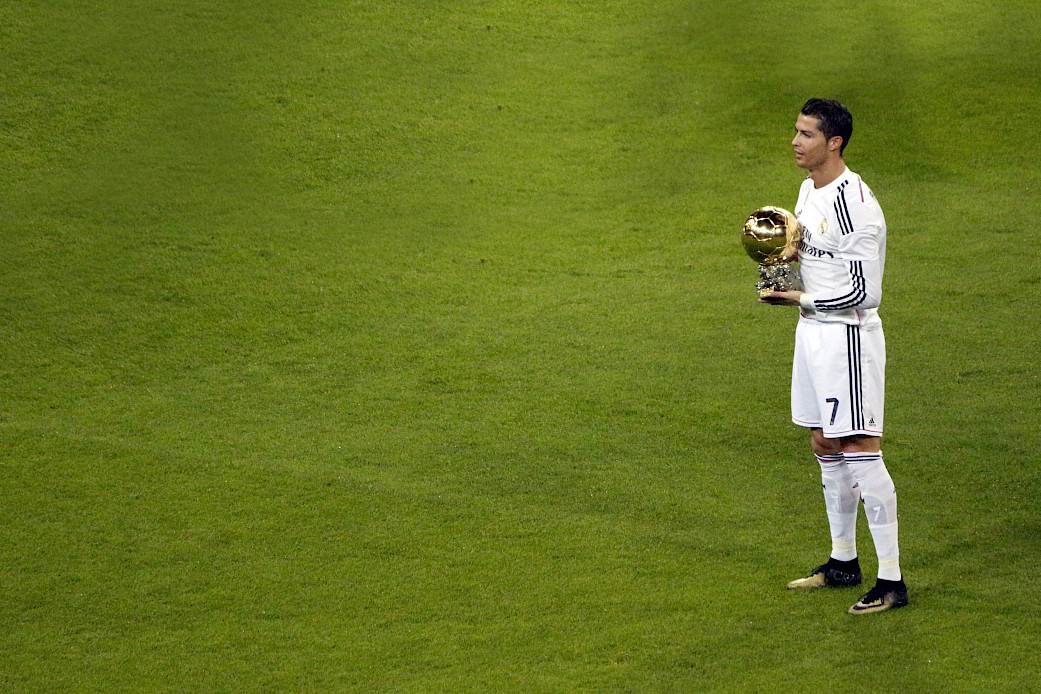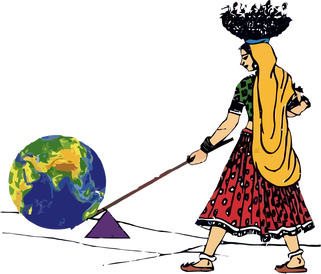Collaboration across disciplines to plot our map to the Sustainable Development Goals
Sarah Pickens ·The United Nations Sustainable Development Goals (SDGs) call for collaboration amongst countries to address the three dimensions of sustainable development - economic growth, environmental sustainability, and social inclusion.1 In considering the major influencers of our international attention, the question becomes, in addition to collaboration amongst countries, how do we nurture collaboration across disciplines of education, science, technology, media, sports, entertainment, and local knowledge experts to drive equitable progress in the SDGs?

This blog posits that through 1.) establishing a transdisciplinary approach and 2.) mapping a network of information sharing, we can accelerate our progress towards the SDGs. Mixed discipline approaches are becoming more popular in our dynamic and ever-evolving global community. The concepts of transdisciplinarity and interdisciplinarity are defined as “a process of collaboration between scholars and non-scholars on a specific real-world problem” and “the integration of perspectives, information, data, techniques, tools, concepts, and/or theories from two or more disciplines,” respectively.2
Scientists and government officials must continue to recognize that a transdisciplinary approach is necessary to accelerate progress towards the SDGs. A more integrated approach between scientists and international educators could maximize knowledge production efforts, making use of the system of development dollars committed to SDGs. The World Bank, the biggest financier of education in developing countries, has invested US$45 billion since 2000.3 While there remains unending debate about what education should be provided where, there is a clear argument for the bridging of science and international education to deliver the highest quality content to address the SDGs.
Changing existing behaviors within social-ecological systems (adaptation) and creating more fundamental changes that define new systems (transformation)4 5 will require more collaboration between science and education. However, a closer partnership between science and education disciplines is not enough. There are mega-social-influencers available to accelerate progress. Consider that, in the United States, 13 percent of society follows science while 71 percent follows sports.6 Athletes, musicians, and entertainers have powerful platforms of influence. For example, Cristiano Ronaldo, the Portuguese soccer star, maintains 517 million social media followers, and Justin Bieber, the Canadian pop singer, maintains 455 million.7

A collaborative approach will take some work to establish. Once the collaborators are identified and the commitments secured, network mappers can identify the contributors’ spheres of influence and action items, and start plotting the anticipated flow of information and knowledge sharing. A network approach can identify spheres of influence, map the communication of information, diversify engagement of different sectors, and drive more accountability.8 9 10 Analysis of social networks can forecast the transfer of information, and assessment of implementation can detect and address areas of concern.
Equity is central to the success of the SDGs.11 Local knowledge experts must be a part of the creation of the collaboration, and must play significant roles in implementation to 1.) ensure equitable flows of information and resources and 2.) ensure equity in the knowledge being produced. Increasing the local and/or traditional ecological knowledge will lessen the disconnect between people and nature.12 13 14 15

The SDGs help us prioritize what knowledge needs to be received by as many global citizens as possible. By taking a siloed approach to this work, we are doing a disservice to our global society. Yet, if we can build a collaboration across disciplines and systematize the effort, we strengthen our chances of nurturing our Earth system and building towards an ecological civilization.
References
- Mishra, P. K. (2018). Environmental education as a driver for sustainable development goals. University of Delhi Shivaji College. ResearchGate: 322835204.
- Haider, L.J., Hentati-Sundberg, J., Giusti, M. et al. The undisciplinary journey: early-career perspectives in sustainability science. Sustain Sci 13, 191–204 (2018).
- The World Bank. (n.d.) Global Partnership for Education and the World Bank Group: The Facts.https://www.worldbank.org/en/topic/education/brief/the-global-partnership-for-education-and-the-world-bank-group-the-facts.
- Barnes, Michele & Wang, Peng & Cinner, Joshua & Graham, Nicholas & Guerrero, Angela &Jasny, Lorien & Lau, Jacqueline & Sutcliffe, Sarah & Zamborain-Mason, Jessica. (2020). Social determinants of adaptive and transformative responses to climate change. Nature Climate Change. 10. 1-6. 10.1038/s41558-020-0871-4.
- Folke, C., Polasky, S., Rockström, J. et al. Our future in the Anthropocenebiosphere. Ambio 50, 834–869 (2021). doi.org/10.1007/s13280-021-01544-8.
- Walsh, R. (2020, August 14). The green sports movement finally hits mainstream. Greenbiz. https://www.greenbiz.com/article/green-sports-movement-finally-hits-mainstream.
- Wallach, O. (2021, May 14). The world’s top 50 influencers across social media platforms. The Visual Capitalist. https://www.visualcapitalist.com/worlds-top-50-influencers-across-social-media-platforms/
- Crona, B., Ö. Bodin. (2006). What you know is who you know? Communication patterns among resource users as a prerequisite for co-management. Ecology and Society 11(2): 7.
- Janssen, M. A., Ö. Bodin, J. M. Anderies, T. Elmqvist, H. Ernstson, R. R. J. McAllister, P. Olsson, and P. Ryan. 2006. Toward a network perspective on the resilience of social-ecological systems. Ecology and Society 11(1): 15.
- Jedd, T., and Bixler, P. (2015). Accountability in Networked Governance: Learning from a case of landscape-scale forest conservation. Environmental Policy and Governance. doi.org/10.1002/eet.1670.
- Pradhan, P. et al (2017). A Systematic Study of Sustainable Development Goal (SDG) Interactions. Earth’s Future. doi.org/10.1002/2017EF000632.
- Anderson, E. (1996). Ecologies of the Heart: Emotion, Belief, and the Environment. Oxford University Press.
- Berkes, F. (1996). Sacred Ecology: Traditional Ecological Knowledge and Resource Management. Taylor & Francis.
- Kopelent Rehak (2020). Eco-healing: Curative Agency and the Blue Space. The Journal of Culture 9(2).
- Trisos, C. & Auerbach, J. & Katti, M. (2021). Decoloniality and anti-oppressive practices for a more ethical ecology. Nature Ecology & Evolution. 1-8.10.1038/s41559-021-01460-w.
About the author
Sarah Pickens

Sarah Pickens is a PhD student in International Education Policy at the University of Maryland, focused on the intersection of sport for development and environmental education. She has more than twenty years of experience in the non-profit sector in the areas of social entrepreneurship, innovation, evaluation and assessment, leadership development, and health equity. She is a leading expert in human-centered programming through sports, specifically in underrepresented populations.
Next Post > Generating Collective Knowledge at the Potomac Open House
Comments
-
Colin Vissering 2 years ago
Sarah - interesting thoughts on the complexities of network structures and the vast potential to use those with influence to help push the world's environmental agenda forward. It seems that pop "icons" have been utilized on the political front, to draw in voters and to educate on political issues. We just need to figure out how to prioritize the very serious environmental issues that face us and demonstrate that action now is critical. The good news is that climate change, sustainability, equity and other key concepts are now familiar terms to most people. We just need to move to the next step in identifying the network strategy that would ensure greater action to address those issues.
-
Meghna Mathews 2 years ago
Hi Sarah,
Very interesting blog you wrote! I agree with you that partnership between science and education is not enough to address the SDGs. You brought up a very good point about social media and entertainers having powerful platforms. Given that today’s society is heavily reliant on social media, it is important for influencers to understand how much power they hold. They should use their platforms to highlight issues, as we are all trying to live a sustainable life together. Two celebrities that came to my mind are Leonardo DiCaprio and Mark Ruffalo, as they use their status towards awareness of environmental issues. DiCaprio is an outspoken environmentalist in Hollywood and founded the Leonardo DiCaprio Foundation, which focuses on alarming environmental issues and works toward restoring and protecting vital ecosystems and endangered species. Ruffalo is actively involved in green deal campaigns and has raised over 182K in donations for water defense. This is just one example of how people of various disciplines can work together to address problems. I second Colin's point about identifying the network strategy so we can address these issues at a faster rate. -
Veronica Lucchese 2 years ago
I really enjoyed this read. I think the idea of utilizing current influencing forces to get the masses onboard with climate solution is the future. Although a small percentage, some popular musicians with large social media followings use their platform to promote environmental education and stewardship. One example that comes to mind are Megan Thee Stallion's beach clean-ups where she engaged her fan base to participate in environmental stewardship. Another example I think of is SZA's partnership with True Lead tea in which she raised awareness about deforestation and contributed to global tree planting initiatives.
One issue that I foresee with utilizing pop culture icons in sports and other entertainment is the idea of virtue signaling. Some influential celebrities participate in raising environmental awareness because they truly care. Others do it for clout and/or endorsement deals. An example I think of when it comes to virtue signaling urban outfitters releasing a "recycled" line of clothing and paying celebrities to endorse their products. In reality, their recycled line has little to no positive impacts on socio-ecological problems but celebrities will continue to promote urban outfitters to seem like they are environmentally conscious to their following
-
John McQuaid 2 years ago
Really interesting post. In terms of looking at how to capture public attention for the SDGs, one might look at what prominent climate influencers are doing, for instance Greta Thunberg (who has 14.6 million Instagram followers), or Leonardo DiCaprio (19.6 Twitter followers). Many people don't know what an SDG is, but a lot have probably heard of Greta and virtually all of Leo. But what do you do with such starpower exactly? Raising awareness and encouraging action are both difficult in a chaotic media environment (and maybe Twitter won't be viable much longer...). Do you encourage the public to provide support for/engagement with specific programs, for overall concepts/sustainability as a value or goal (e.g. Zero Hunger)? etc. SDGs are very much about specific policies and results, what role does a broader public play?
-
Mary Efird 2 years ago
Really great post, Sarah! I'm impressed at how you managed to combine sustainability, transdisciplinarity, social networks and your own interests in sports advocacy all into one post. (And it totally works!) I think it's really interesting how you equate social networks to social media and how social media can be a source for good in spreading awareness about climate change and other environmental issues. There are definitely some celebrities who are better than others at promoting this kind of information on their social media. As many of our classmates have already commented, Leonardo DiCaprio is very consistent in posting robust and reliable information about the climate crisis. Interestingly, this is pretty much all he posts about on social media, which I have thought might actually deter some of his followers. If a social media account is construed as "boring" or merely "educational" a lot of regular people might not be inclined to follow it. I think sometimes it can be more powerful when a celebrity posts information alongside their regular posts, which is something that Mark Ruffalo does. That being said, I've also seen many celebrities post information on their social media that is simply not accurate, which can misinform the public and even be quite dangerous. Interesting points to think about. Great post!